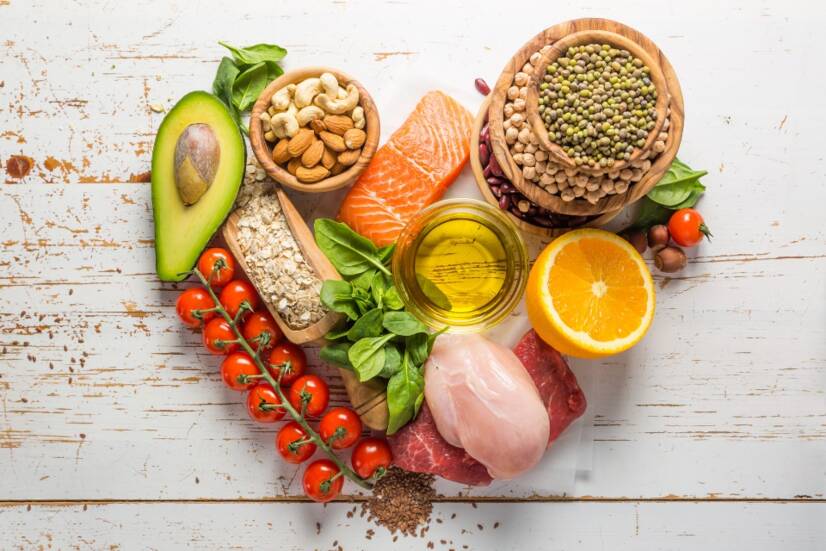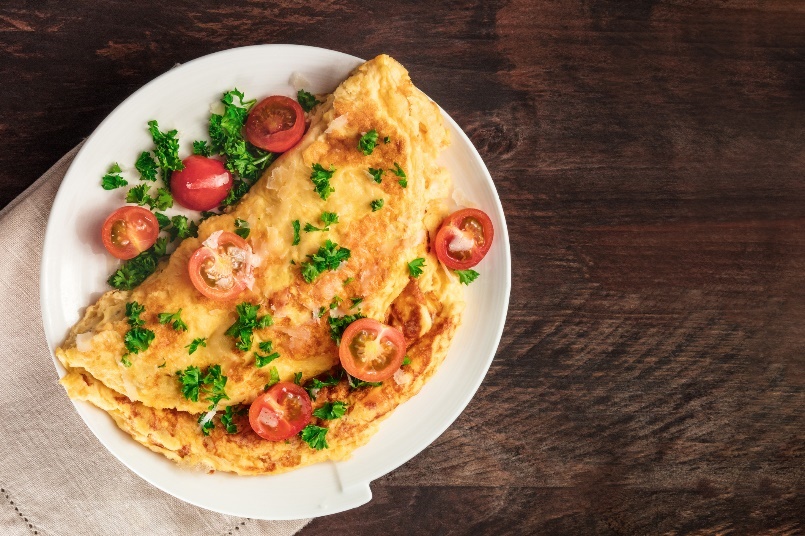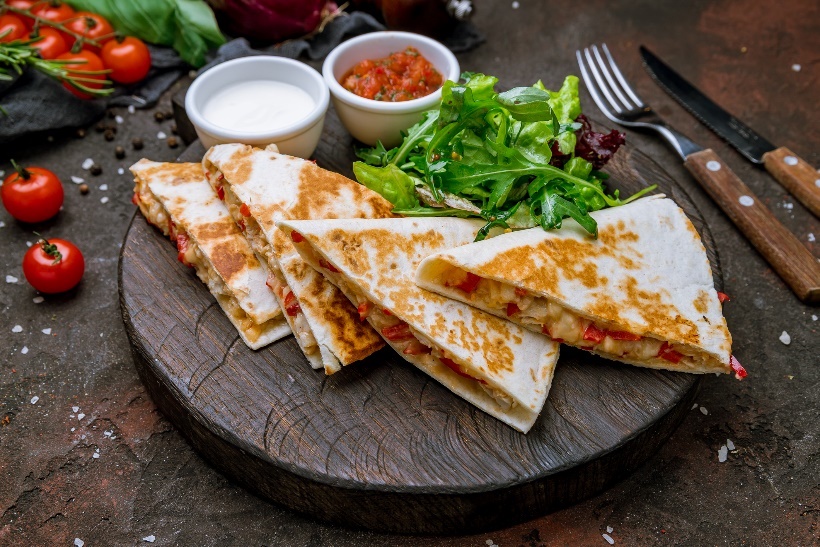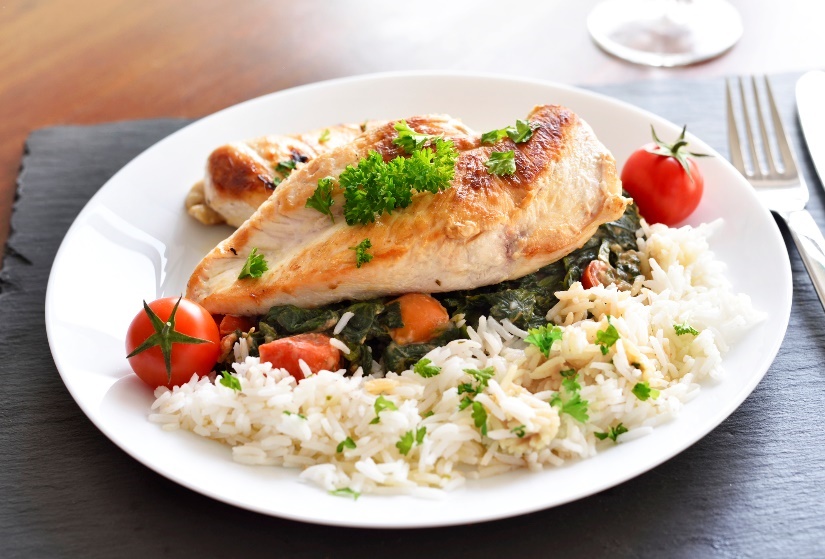- CAHA, Jan. Sám sobě nutritionovým poradcem. In Brno: CPress, 2021. ISBN 978-80-264-3618-8
- SHARMA, Sangita. Clinical nutrition and dietetics: in a nutshell. Translated by Hana POSPÍŠILOVÁ. Prague: Grada Publishing, 2018. Sestra (Grada). ISBN 978-80-271-0228-0
- forbes.com - How To Lose Weight Fast. Kimberly Dawn Neumann. Forbes Health
- solen.com - New trends in medical nutrition - nutritional practices in patient treatment. Anna Komonova. Solen .
How to lose weight in a healthy way? Weight loss diet. Beware of nonsense diets

The key to healthy weight loss is a complete diet with plenty of macronutrients and fibre. Beware of crash diets. What should be eaten and what should be avoided in the diet?
Article content
A modified full-fat diet with a moderate calorie deficit is effective and free of health risks. Crash diets and detoxes, which can do more harm than good, should be avoided.
Macronutrients, daily intake, caloric deficit, examples of diets, supplements and much more interesting information can be found in the article.
Wholesome diet and calorie deficit
In order for weight loss to be sustainable, stable and without health risks, it is necessary to take in all the necessary nutrients in the diet. Carbohydrates, fats and proteins are macronutrients and together form the basis of the diet.
In order to function properly, the human body needs a daily dose of nutrients taken from the diet. Therefore, omitting one of the macronutrients from the diet is neither appropriate nor sustainable in the long term.
The food we take in is energy for our body. For all internal systems to function physiologically and have mental and physical energy. This energy taken in is expressed in calories - kcal.
On the other hand, through our activities during the day - sports or work - we release energy from the body.
There is a concept of basal metabolism. It is the energy that our body consumes or burns just to perform bodily functions (without our major contribution).
The approximate basal metabolic rate (output) is individual. It can be calculated using an online calculator - based on age, gender, height and weight. However, genetic factors, long-term lifestyle and health also influence its value.
Combining basal energy expenditure and added physical activity gives the total daily energy expenditure.
The basis of weight loss is caloric deficit - energy expenditure is greater than energy intake.
Useful tools:
- BMR - Basal Metabolic Rate Calculator
- Calculator: how to convert kJ and kcal
- Calorie tables: what are the nutritional values of meals and foods?
How to calculate protein intake?
Proteins, called proteins, are the basic building blocks in the body that make up cell and bone structures.
In the context of diet and weight loss, they are important for the physiological functioning of internal systems and for maintaining and building muscle mass. This food has a strong satiating and thermic effect.
Our daily protein intake for sports and weight loss should be between 1.5-2 grams per kilogram of body weight.
The recommended daily protein intake is approximately 30% of CEP (total energy intake).
Example of a protein source:
- Meat (especially chicken and beef)
- Eggs
- Beans
- Chickpeas
- Lentils
- Cottage cheese
- Cottage
- Fish
- Tofu
- Pseudocereals (quinoa, buckwheat)
- Protein drink (vegetable/whey...)
How to take carbohydrates?
Although some diets try to avoid them, carbohydrates are an essential source of energy for the proper functioning of our bodies. Complex slow carbohydrates are mainly found in rice, potatoes and pasta.
Slow carbohydrates have a satiating effect and the energy is supplied to the body gradually. On the other hand, fast sugars, which are mainly found in sweets, do not have much of a satiating effect and the replenished energy wears off after a while.
By eating good quality whole grain carbohydrates, vegetables and fruits, you can easily meet your daily fibre intake, which should be 30 grams per day.
The recommended daily carbohydrate intake is approximately 40% of the CEP (total energy intake).
Example sources of complex carbohydrates:
- Rice
- Potatoes
- Pasta
- Legumes
- Cereals
- Pseudocereals (quinoa)
- Pastries
How to take in fats?
Fats tend to be the bogeyman in many diets. However, their intake is essential as the main energy store for the body and ultimately for processing various nutrients in the body and hormonal activity/balance.
Both excessive and insufficient fat intake carry health risks.
The recommended daily fat intake is approximately 20% of the CEP (total energy intake).
Example of fat source:
- Oil (olive, sunflower...)
- Butter
- Fish (especially oily fish such as salmon or mackerel)
- Pork
- Eggs
- Avocado
- Cheese
- Cream
Macronutrients and their calories:
- 1 g protein contains 4 kcal (17 kJ)
- 1 g fat contains 9 kcal (38 kJ)
- 1 g of carbohydrate contains 4 kcal (17 kJ)
Read also:
Essential nutrients in the human diet: what are proteins, sugars, fats?
An example of a tasty diet and weight loss
From the point of view of both health and weight loss, it is advisable to eliminate and limit excessive intake of fats and fast refined sugars in the diet. These are mainly sweet and salty snacks, cold cuts, confectionery, highly processed foods and sweetened carbonated drinks.
However, as long as the 'forbidden food' is eaten occasionally, it is perfectly fine. What is important is what we eat regularly and in large quantities. A positive relationship with food is also important.
Simple tips:
- Eat regularly during the day
- Eat more slowly and enjoy your food
- Limit liquid calories (carbonated sugary drinks, alcohol)
- Increase protein intake as part of your daily food intake
- Increase the intake of vegetables and fibre in the diet
- Include all necessary macronutrients in your diet
- Follow a sufficient drinking regime (water, mineral water, tea)
- Don't look for unnecessarily complicated recipes, look for simplicity
- Incorporate physical activities that you enjoy into your diet
- Maintain regular quality sleep for at least 7 hours a day
- Track your intake/output, but don't count every single calorie
Below is an example of a diet and different meal options throughout the day for inspiration.
The exact composition and amount of food already depends on age, gender, weight, health, goals and taste. Therefore, it is useful to know your own approximate calorie intake and expenditure.
The key to weight loss is the calorie deficit.
Example of breakfast
It used to be said that breakfast is the staple of the day. It may be the first meal of the day, but if you don't regularly feel like eating early in the morning, there is no need to force yourself to eat.
The first meal can also be a snack in the form of fruit, cottage cheese, a protein yogurt/drink or, for example, mozzarella with fresh tomatoes and arugula.
Sweet option:
- Protein porridge (pudding) with fresh fruit and a small amount of nuts/seeds
- Clumpy low-fat cottage cheese mixed with white yoghurt, honey, muesli and fresh fruit
- Protein yoghurt mixed with wholemeal cereal and fresh fruit

Savoury version:
- ½ sliced avocado on whole wheat toast with tomatoes and rocket
- Scrambled eggs/omelet with mushrooms with fresh vegetables and toasted bread
- Ox eye with beans in tomato sauce and fresh vegetables

For breakfast, look out for:
- high-calorie, high-sugar, low-protein yogurts
- dried sweetened fruit (often high in sugar)
- too many nuts/seeds
- too large portions in main meals
Example of lunch
Lunch is around the middle of the day and energy is needed for work and physical and daily activities. It is therefore advisable to take complex carbohydrates with protein. It is advisable to eat more slowly in smaller bites.
When choosing a main meal, do not forget about any soups, which may be excessively calorific themselves.
Examples of lunches:
- Roast chicken breast with rice and grilled vegetables
- Grilled tofu with quinoa and fresh vegetables
- Grilled fish fillets with roasted potatoes and vegetables
- Rice Chinese noodles with chicken in soy sauce with egg and vegetables
- Pasta with tomato sauce and minced beef
- Baked quesadilla with chicken/beans and vegetables

Watch out for:
- High calorie dressings and sauces
- High calorie large soups
- Excessive side dishes and low protein
- Eating too fast and gobbling food

Dinner example
Dinner as the last meal of the day should be slightly lighter than lunch, but this is always individual depending on work, activities, sports, etc. However, sufficient protein and vegetables are recommended.
Examples of dinners:
- Mixed vegetable salad with grilled chicken and ½ avocado
- Qunioa/couscous with roasted chickpeas and fresh vegetables (arugula, tomatoes, cucumber, peppers)
- Beef steak with asparagus, vegetables and roasted potatoes
- Homemade poké bowl with chicken/tofu/shrimp, edamame beans and various fresh vegetables
- Grilled halloumi cheese with grilled eggplant slices and vegetable salad
- Roasted marinated chicken breast with grilled vegetables

For dinner, look out for:
- Too small portions and subsequent "couch potato" eating in the evening
- eating too quickly and over-indulging
- high-calorie salad dressings and sauces
- too many side dishes and not enough protein and vegetables
- eating dinner too early or just before bedtime

Examples of small meals during the day (snacks/lunches):
- Fruit (apple, banana, grapes)
- Cottage cheese/low-fat cottage cheese
- Mozzarella with tomatoes and rocket
- Sweet protein drink/snack/yoghurt
- Vegetable/fruit smoothie
- Vegetable "sticks" (carrot, cucumber, kohlrabi)
Appropriate drinking regime:
- Pure still water
- Mineral water
- Fruit/herb tea (sweetened with honey/stevia)
- Fresh fruit juices in smaller quantities
Calculate your daily fluid intake:
Drinking plan - calculator: How much water should I drink per day?
Beware of crash diets and detoxes
Speeding up your weight loss journey may sound tempting, it's not.
Too fast drastic diets with excessive calorie deficit are not sustainable in the long term. They bring with them a number of health risks such as disrupted metabolism, fatigue, yo-yo effect, lack of necessary nutrients in the body or physical and mental exhaustion.
Fast and drastic diets carry a number of health risks.
Diets that exclude a particular macronutrient (carbohydrate/fat) from the diet are not healthy or sustainable for the body. All types of macro- and micronutrients in the diet are essential for the proper functioning of the body.
Whether it is weight loss drinks, detoxification products or miracle pills, one should be vigilant when buying them. In most cases, these are expensive products replacing diet and promising quick results.
However, their role is only the old-fashioned calorie deficit. This can also be achieved with a wholesome tasty diet without starvation and health risks.
It is possible to increase the protein intake in the diet with a protein powder drink. It is a tasty source of protein that "tricks" the body into not having a sweet tooth. It is suitable for increasing the protein content in the diet, for vegans, athletes and for people seeking to maintain and build muscle mass.
Fat burners in the form of tablets and drinks contain substances with thermogenic effect and promote lipolysis.
Their efficacy cannot be refuted, but it should be remembered that they are only a form of supplementation to a set goal. They are not the pillar on which weight loss is built. The pillar is a nutritious diet, calorie deficit and physical activity.
Interesting resources










